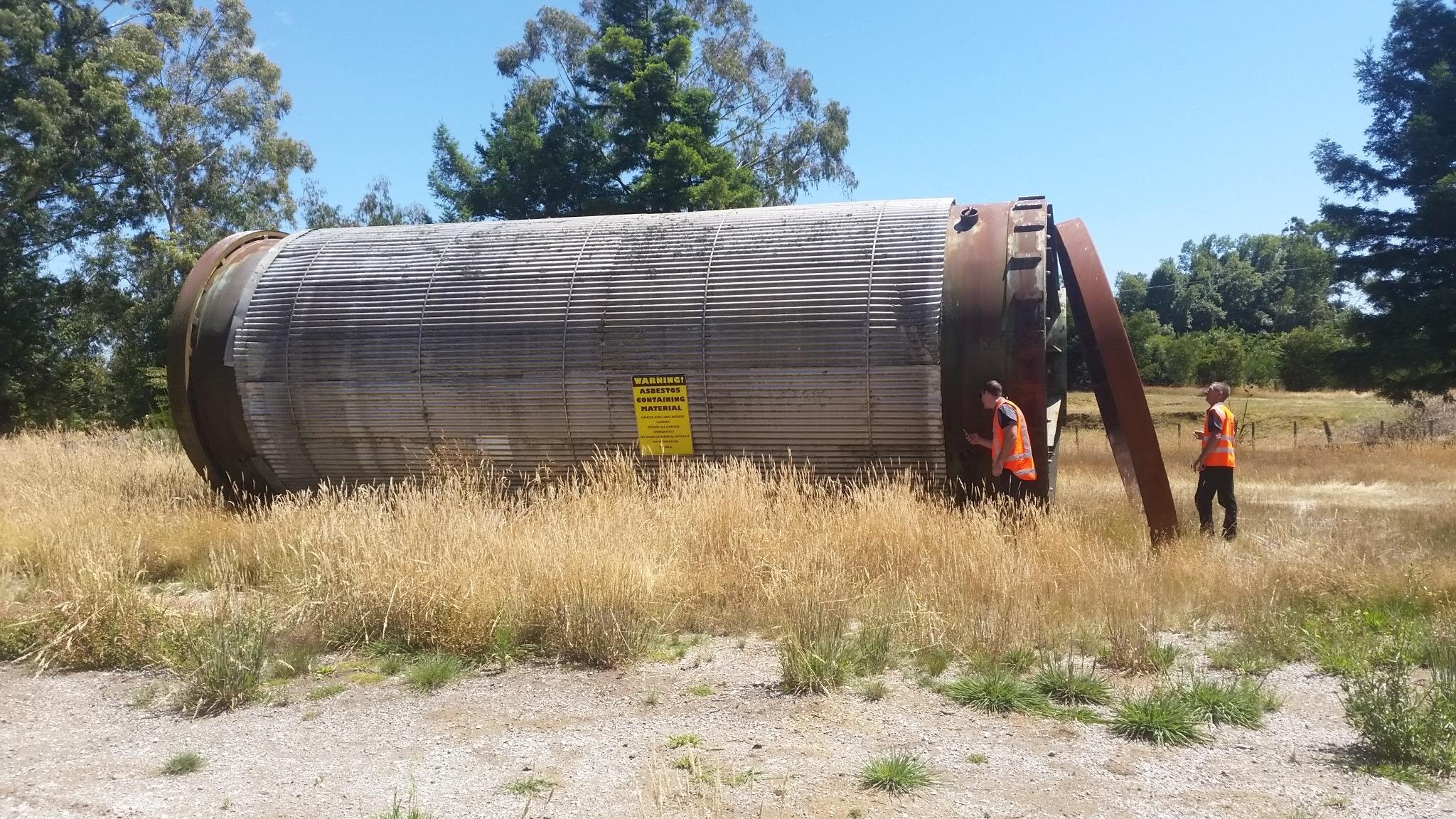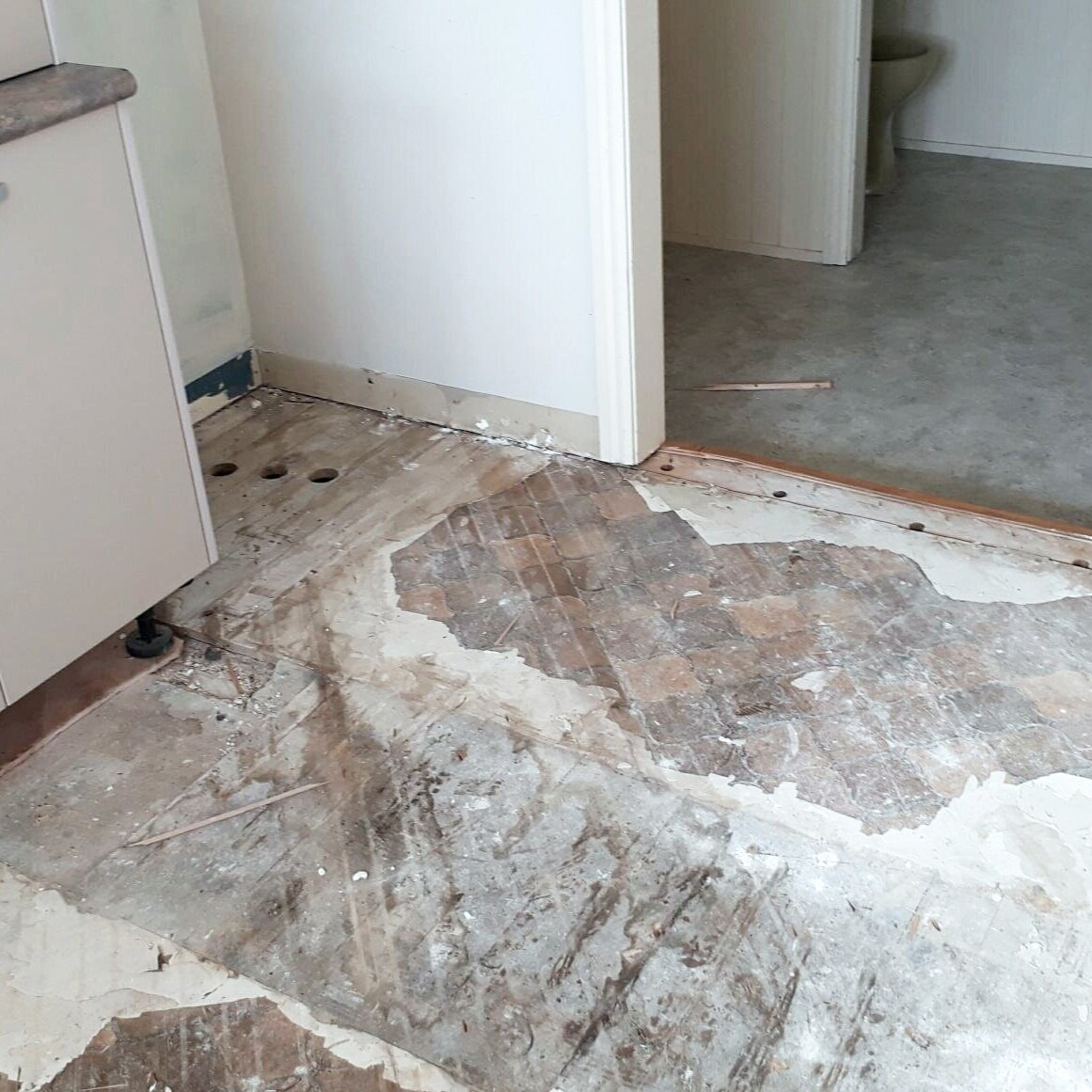
What is Asbestos?
Asbestos related diseases are the number one killer in New Zealand workplaces.
Despite increased awareness of it’s dangers, around 170 people die every year as a result of exposure to asbestos, worse, the diseases associated with asbestos can take anywhere up to thirty years or more to become evident, and once established there are very few treatment options available.
Where can Asbestos be found?
Any building in NZ built before 1990 may contain asbestos. New Zealand only banned the importation of asbestos products in 2016; while it is rare, even newer buildings could have asbestos containing materials in them.
Textured Ceilings
Heating Panels
Outdoor Steps
Pipe Lagging
Roofing
Electrical Boards
Super Six Fencing
Shadowline Cladding
Guttering/Downpipes
Gable Ends
Soffits
Vinyl Flooring

Asbestos FAQs
What is Asbestos?
Asbestos is a naturally occurring mineral made up of many small fibres. These fibres are very strong and are highly resistant to heat, fire, chemicals and wear. There are three main types that are generally found in New Zealand; Chrysotile (white asbestos), which is the most common, Amosite (brown asbestos) and Crocidolite (blue asbestos).
Where can Asbestos be found?
Because of its low cost, strength and the resistance it provides in sound, fire and chemical protection, asbestos was widely used in building materials up until the late 1980’s.
In the past, the special properties of asbestos made it popular for:
asbestos-cement sheet cladding and roofing
drainage pipes
backing material for floor tiles and vinyl sheets
thermal insulation board (eg, around fire places)
textured ceilings and sprayed-on wall surfaces
lagging for insulation around pipes, heaters
lagging around hot water cylinders
vehicle brakes and clutches
textiles
spouting and guttering components
Asbestos was also used in household items, such as:
oven gloves
ironing board pads
simmer mats for stoves
fire blankets.
Who can work with Asbestos?
In order to work with asbestos materials, the operator needs to hold an asbestos Certificate of Competence which is accredited and issued by Department of Labour / WorkSafe New Zealand. Individuals who hold this COC have had to undergo 1500 hours minimum of specific training in the safe handling, containment, treatment, processing and removal of asbestos materials.
Do you undertake small residential work as well as the larger industrial and commercial projects?
We have teams that are experienced in all types of asbestos and demolition projects. As well as having teams that are dedicated to servicing large commercial, civil and industrial clients we also have teams that specialise in managing much smaller projects, particularly in the residential market.
What evidence will I have once you have completed the work that the area is actually safe from asbestos fibres?
Once we have completed any friable asbestos project, we will engage an independent analyst to undertake surface dust swabbing and/or air monitoring. The laboratory that undertakes this work will be an IANZ accredited laboratory and is independent of ATL Group. We will also provide you with signed certificate upon request that state that the work has been carried out according to the NZ Guidelines and warranting as to safety. We will also provide on request a statement warranting that the waste material has been properly disposed of.
How do I know that ATL Group will do the job safely and properly?
We have very strict procedures and health and safety management. This is to keep both our clients and ourselves safe when working with asbestos or any other hazardous material. We are fully insured, Notify all Hazardous Work with WorkSafe, and all of our projects are run by a trained Site Manager suitably competent for the project to which they are tasked. We are uncompromising on delivering projects with procedural excellence. It is our commitment to excellence in procedures and managing risk through health and safety planning that has allowed us to develop such a respectable list of high profile clients.
Does New Zealand still import asbestos?
Importation of raw asbestos is now banned. Asbestos can still be brought into New Zealand if it forms part of a finished product. Because New Zealand trades with other partners who still use asbestos in their products, we do occasionally get materials that still have asbestos content coming into New Zealand. Most commonly, these products originate from India, China and South East Asia although other origins are also possible.
I believe that I have been exposed to asbestos fibres, what do I do?
If you believe that you have been exposed to asbestos, it is best that you contact your trusted health care professional who will be able to talk through this with you.
Why is Asbestos so dangerous?
Asbestos is a fibrous material that can easily break down into millions of smaller fibres or a fine dust that is colourless and odourless and can easily be carried in the air if it is damaged or deteriorating. If inhaled by someone working or living in the area, the fibres can cause serious health problems such as cancer, respiratory conditions or death. When respired, these little fibres, which can be hook or barb shaped, can go deep into the lungs and lodge in there. The human body is not able to absorb or dislodge these fibres and over time they present a risk for Asbestosis and Mesothelioma. The effects of asbestos exposure can take several years before symptoms start showing.
There is no safe level for exposure to asbestos dust or fibres, so it is important that everyone understands the danger and has the knowledge to take the right precautions to keep themselves and everyone else safe.
Does my property contain Asbestos?
If your property was built between the 1920s and the 1990s it’s very likely to contain asbestos in one or more areas. You’ll likely find it in textured ceiling coatings, concrete roofs or decramastic tiles, insulation in the roof or on pipes, cladding and soffits, electrical boards, vinyl flooring or concrete deck flooring, chimney flues and fireplaces.
Unfortunately it’s impossible to tell from a photo if an object contains asbestos. It must be tested by a laboratory.
How do I get an Asbestos sample?
You can do this yourself and send it off to an asbestos testing laboratory. Read up HERE how to do so safely. Alternatively you can contact an asbestos consultant and they will come to your home and take a sample for you. Results should be returned within 3-5 days.
What’s the difference between A and B class asbestos?
A Class asbestos is Friable which means it can be easily crumbled. A Class products include:
textured (popcorn) ceilings
pipe lagging
paper backing to vinyl flooring
thermal insulation panels
B Class asbestos is Non Friable which means it has been bound within a substrate and therefore does not release fibres into the atmosphere. B Class products include:
concrete cladding
baseboards
concrete fencing
corrugated concrete roofs
electrical backing boards
plastic floor tiles
It is important to know that non-friable asbestos can quickly become friable if it is damaged, or is unsealed or exposed to weather elements; that is why there are specific controls and processes that must be followed when working with any asbestos.
I have asbestos in my house/building. How worried should I be?
The mere presence of asbestos is not itself necessarily a serious cause for alarm. The type of asbestos material and the condition that it is in plays a key role in whether the material poses no threat at all or an extreme threat. Some materials contain a very small percentage of asbestos and what little asbestos there is can be well bound within the matrix of the material. Other materials or application can have very high or pure asbestos content that is only very loosely bound together. If the material is in good condition, is painted in an encapsulating material or is not being disturbed then it may actually pose very little risk. We encourage you to contact us to discuss your situation if you are concerned that you might be exposed to asbestos.
I want to Demolish or Renovate my house but there may be Asbestos present. What do I need to do first?
If you are planning on carrying out refurbishment or demolition of your building, you will most likely need to have an asbestos refurbishment and demolition survey carried out before you start this process. All asbestos needs to be removed from any building before or as part of the demolition process. This removal needs to be performed by a licensed asbestos removal company and that’s where we come in.

We offer free, no obligation quotes and advice.












